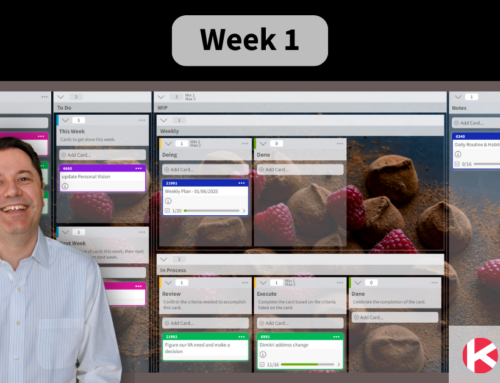
To succeed in this modern world, quality, speed, and consistency are demanded from businesses. If a product is not consistently delivered on time and with quality, businesses could lose their piece of the pie. This is very true for technology companies where digital advancements come left and right and customers have access to various options.
Being nimble to combat these challenges requires businesses to employ processes that will make their work more efficient. To deliver products with high levels of quality faster and consistently, companies look to harness the capabilities of their employees through team swarming.
Swarming Technique in Agile
Team swarming is an Agile technique where two or more members of a team work together towards a deliverable. This is commonly seen in Scrum teams when two or more development team members work on a single story. In general, team swarming means to come together to get something 100% done before working on anything else.
Team swarming is recommended when teams get stalled. When work on a story seems to be taking longer than expected this compromises their goals and targets. So two or more team members swarm to remove the impediment. This can also be done when teams are doing experiments. When exploratory work is needed, it’s ideal to have more than one person do it. The more heads work together, the better the ideas that keep flowing. Getting the work done is usually faster too when the team swarms.
But team swarming is not easy to implement. It’s not for new and inexperienced teams. You need to achieve a certain level of rapport amongst team members for them to cohesively come together. Otherwise, there’ll be tension and a feeling that team members are stepping on each other’s toes.
What are the Advantages of Swarming
While team swarming can be difficult to pull off, teams can expect many benefits when they do it. Let’s look at some of them.
Address Skill Set Gaps
Team members have varying levels of proficiency and skills. They have different competencies and specialties. The good thing about team swarming is it allows team members to learn from each other. Consider a junior developer swarming with a senior developer. What could take 8 hours for the junior developer to do could probably take 4 hours for the senior developer or even less. When they swarm, the junior developer can learn from the senior one and upskill. This goes the same way for cross-functional collaboration. Developers can learn from testers and vice-versa. The more they know each others’ specialties, competencies, and how they work, the better they can adapt their process to harmoniously work towards completing their deliverables.
Establish Constant Collaboration
Team swarming forces teams to collaborate. It establishes tight communication within the team. This allows them to be always in sync and ready to help team members when the need arises. When collaboration is the default option, team members won’t feel embarrassed to ask help from their teammates. This also enables the continuous flow of ideas and pushes teams to rethink their process and continuously improve.
Deliver Faster With Quality
The saying two heads are better than one certainly applies to team swarming. Teams can push things out faster when they swarm. When impediments are quickly addressed, teams proceed to work on new items and keep the pipeline flowing smoothly. When teams need to perform exploration work to address unknowns in a given story, team swarming enforces them to think collectively and get answers faster than one person can.
Team swarming also establishes checks and balances. Having another person review your work increases the quality of your output and provides a different perspective towards how the desired output can be achieved. This also minimizes the possibility of rework.

What is Team Swarming in Kanban?
Kanban teams are no stranger to swarming. One of the core properties of Kanban is to limit work in progress. This is the reason why team swarming is often encountered in Kanban teams. When a team reaches their WIP limit, it’s natural for them to swarm on the current in-progress items and free up the flow. If they don’t swarm, their cycle time increases. It also increases the wait time before other backlog items can be started. They can’t work on any new tasks unless they finish the in-progress ones.
This is also one of the good things about team swarming in Kanban. Instead of having a bunch of work started, the team aims for task completion. The common mindset is for Kanban team members to each work on their items to get more done. But in reality, this is not always the case. Often, teams end up with half-baked goods and their cycle times get too long. If you’re a Scrum team and you often miss delivering all your sprint goals, chances are it’s because you took more than you can handle.
Here’s something to ponder on:
If you had to choose between having 70% of the features 100% done or having 100% of the features 70% done, which would you choose?
70% done is NOT DONE. These features are unusable.
70% of the features being 100% done means I can deliver that 70% and my customers can start using those features.
Teams should always aim for 100% completion. And this is what Kanban enforces. It pushes a Kanban team to focus and adhere to their WIP limits. And with team swarming, they intensify that focus and complete tasks faster.
Let Your Team Swarm
It’s undeniable that team swarming has its benefits. But for a more successful swarm, you need to have structure, discipline, and an open-minded team. Here are some tips to make the most out of your team swarming activity:
- Have a clear goal. What do you want to get out of the swarm? Is it a solution to a problem? Is it to get answers to questions or unknowns? Is it to create something that will be used for future work? No matter what it is, the goal must be clear to everyone involved in the swarm.
- Establish a common understanding. Make sure everyone’s on the same page as to the information you currently have. If you’re working on a story, ensure everyone has the same understanding of what it’s about.
- Use timeboxing. Treat each swarm as a challenge with a deadline. This increases your focus and forces you to plan your tasks into manageable chunks.
- Have checkpoints. Within the course of the swarming activity, have regular checkpoints to review your progress. This is a good way to check what you’ve accomplished and if anyone is stuck on their assigned task.
Successful teams use swarming to tackle their most important tasks. Because they know that the faster they can ship it out, the earlier their customers can get it. This shortens the feedback loop and allows teams to gain more insight into how they can improve their product and how they work. Each team swarming activity effectively becomes a learning opportunity which enables teams to continuously improve.
So the next time you’re faced with a problem or get stuck, harness the power of your team by using team swarming. We’d love to hear your stories and how team swarming has helped your team grow.
Learn to Work Smarter, Not Harder!
Get our top articles weekly.
Table Of Contents
Discover many more posts…







